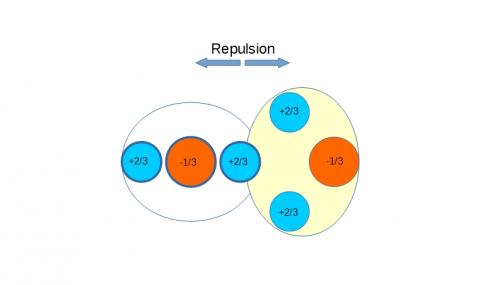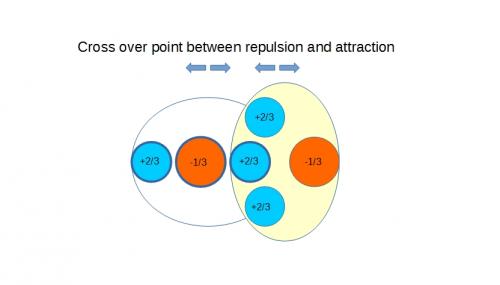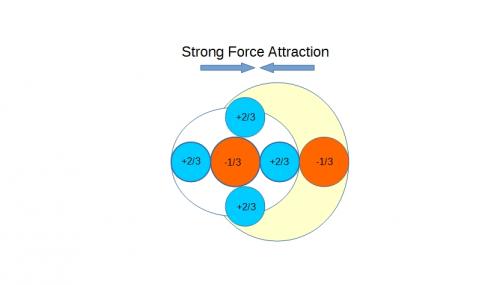-
Posts
33 -
Joined
-
Last visited
Content Type
Profiles
Forums
Events
Everything posted by Bengt E Nyman
-
You are proving that you have not taken the time to read www.dipole.se Yes, it seems that sticking to convictions and principles is not welcome at this forum. You asked ONE condescending question to which you already know the answer, which tells me that you are not interested in a serious dialog. I can only mark you down as not interested, not qualified, or both.
-
I have a blog; www.dipole.se You are anxiously defending an antiquated religion, not a science.
- 55 replies
-
-2
-
I have to agree with the concern of Scott, the originator of this topic. Under the heading of Speculations there should be little or no strong-arming of the topic or the author. To shut down a topic because it displeases a moderator for whatever reason can easily be misunderstood as censorship. If the subject is not worthy of pursuit let it die a natural death. To kill it with a big red stamp raises suspicions about intolerance and censorship. Bengt Nyman MSME PE
-
Introduction The complexity of the universe is possibly beyond the grasp of the human brain, as for your dog, your cellphone is just another thing to play with. A sign of this is when physics resorts to complex mathematical models which do not tie into a human way to visualize or understand. These mathematical models may not picture or explain how things work, but they do serve as important tools for performing certain calculations and predictions. They can also be important as names and placeholders for phenomena not yet fully understood and explained, temporarily allowing science to get around them and continue. A couple of examples are Relativity and SpaceTime, concepts devised in the early 1900. Both are complex mathematical tools without the features or the pretense to offer a human, common sense explanation for how the phenomenon in question really works. Other examples are the encapsulation of certain subatomic phenomena into fictional names and particles such as gravitons and gluons, serving as placeholders for causes to gravity and strong force. This is not a criticism of these fictional models. They serve as useful models and placeholders for less than fully understood phenomena. However, they also deserve a more complete understanding and disclosure at a later date. One such phenomenon is gravity. In 1964 physicists Murray Gell-Mann and George Zweig proposed the quark model, detailing the content inside protons and neutrons. One important aspect of this is that even neutral particles like the neutron contains electrically charged sub particles called up- and down-quarks. At a microscopic level protons and neutrons can consequently be regarded as triangles with electrically charged corners, even if in case of the neutron the sum of the -1/3, -1/3 and +2/3e corner charges equals zero. These electrically charged corners are key to a new and more detailed model of gravity and strong force. This new insight has been made possible by Murray Gell-Mann and George Zweig's discovery in 1964 and can therefore not be expected from older models such as relativity and spacetime devised in the early 1900. Imagine two neutrons floating in empty space. Since they are both neutral, do they care about each other ? What if they drift a little closer ? What if the positively charged corner of one is pointing toward a negatively charged corner of the other ? Could they attract each other ? According to Coulombs Law the attraction between two dissimilar electrical charges is the product of the sizes of the two charges divided by the square of the distance between them. F=Ke(q1 x q2)/r^2 As we go on, this description will become more and more detailed and more and more mathematical. If you want to skip that, the bottom line is this: Gravity, which keeps us on the ground, and strong force which holds the atom nuclei together are the results of electrostatic forces between electrically charged particles like protons and electrons in atoms and between electrically charged sub-particles like up- and down-quarks in neutrons and protons. To be continued ?
- 1 reply
-
-1
-
Before we even worry about the more complex proton simulations, please take a look at the hydrogen and neutron gravity simulations with zero initial velocity: 2D Charge Posturing, Dipole formation and ES Gravity between 2 simulated hydrogen atoms: 2D Charge Posturing, Dipole formation and ES Gravity between 2 hydrogen atoms with free quarks: http://www.youtube.com/watch?v=r8sZvadCHH4 3D Charge Posturing, Dipole formation and ES Gravity between 2 hydrogen atoms. 3D model of a Neutron: 2D Charge Posturing and Gravity between 2 neutrons with trapped quarks: 3D Charge Posturing and ES Gravity between 2 neutrons: I don't know if anybody has simulated with enough accuracy or gave it enough time to start seeing the results. Please look at the time laps simulations above before you jump to any conclusions. Also take a look at a general mathematical expression showing that there is ALWAYS a finite positive rest force as a result of ES particle posturing and interaction: The electrostatic dipole Figure 1. Conceptual numerical example according to Coulomb's Law: Attraction = Ke* q^2* (/0.9^2 + e^2/1.1^2 - e^2/1^2 - e^2/1^2) = Ke* q^2* (1/0.81 + 1/1.21 - 1/1 - 1/1) = Ke* q^2* (1.23456790 + 0.82644628 - 1 - 1) = Ke* q^2* (0.06101418) = Ke* 0.061q^2 As can be seen in the result of the calculation above, the dipole interaction between two atoms always yields a finite, positive attracting rest force causing gravity.
-
A. The simulations of hydrogen and neutron gravity are simple. You can do them yourself, after which we will have a better climate for this discussion. B. The simulations of strong force are more complex and a bit delicate, just like the balance between repulsion and strong force attraction. C. The simulations, 3D modeling and calculations of Deuterium binding energy is very complex and of little use to you until you believe or repeat at least point A above.
-
Since you are not listening to anything I am saying, why don't you use any physics simulation program you want and repeat my simulations. You will get the same results. See above.
-
1. I have provided the simulations as well as illustrations to make the results more accessible. 2. No, why should they. I have already provided the simulations. 3. You don't have to run the simulations again, unless you think I am lying to you. 4. I am providing the quantification of binding energy of Deuterium, calculated as a result of the hypothesis. It matches the values given by others. 5. You will get the same results we did. NEUTRAL PARTICLES WITH CHARGED CONSTITUENTS ARE ATTRACTED TO EACH OTHER CAUSING GRAVITY. SIMILARLY CHARGED PARTICLES WITH DIVERSELY CHARGED CONSTITUENTS (LIKE PROTONS) CAN BE FORCED PAST A POINT OF REPULSION CROSS OVER TO FORM E.S. STRONG FORCE BONDS. 6. Now please address the physics aspects of our hypothesis or simply point out that you are not equipped or interested in doing so. P.S. If you are a physicist with ties to a university or a nuclear agency you already have access to plenty of computing and simulation power. Simulate two hydrogen atoms, or two neutrons, in a new and otherwise empty universe. Choose real world parameters, including charged quarks and electrons, and be prepared to wait. The first time it took me overnight, but I am sure you know how to handle that. Good luck. Have fun.
-
1. Interactive Physics is physics and motion simulation software by Design Simulation Technologies. Also used was Newton by DesignSoft. 2. On an off-line computer. 3. Your question is not pertinent to you addressing my question about our hypothesis.
-
The Kinetic Energies are given by the masses and the initial velocities chosen in the simulation. If you open the simulation in Interactive Physics you should be able to see all the parameters. I would very much prefer if you could turn your attention to the proposed hypothesis. I invite you to fault the hypothesis. Especially the fact that this hypothesis explains and calculates strong force and subsequent binding energy in Deuterium to known values. If you open the simulations in Interactive Physics you should be able to find all the parameters including masses and velocities.
-
I do not agree. These are not accelerator collision simulations, these are mathematically correct slow speed collisions showing the behavior of ELECTRICALLY CHARGED particles to show the electrostatic mechanism of repulsion, strong force cross over and strong force. This is not an attempt to repute or compete with main stream science, this is a proposed mechanism of something that has remained unexplained.
-
It's a shame if we can not carry on a conversation where there might be more to be learned about a subject.
-
No! The simulations offered are not a study in energy preservation or the details of fission or fusion. The simulations are part of an attempt to communicate a new observation about ES particle behavior. See strong force illustrations above. Feel free to consider that this material goes beyond what we already teach today.
-
Bi-stable strong force mechanism based on interactions between ES constituents in protons as observed in computer simulations, see above posting. Bi-stable strong force mechanism illustrated for clarity of mechanism shown below: Figure 5: Protons under repulsion. Figure 6: Protons at the cross over point between repulsion and strong force attraction. Figure 7: Protons under strong force attraction.
-
Simulations suggest a model for gravity based on the ES charge of the individual constituents in atoms and neutrons. Said simulations show a possible ES mechanism for neutron gravity. 2D Charge Posturing and Gravity between 2 neutrons with trapped quarks: 3D Charge Posturing and ES Gravity between 2 neutrons: Recent calculations also suggest an experiment: Proposed neutron gravity experiment: Place a negative charge of 2*10^-18 Coulombs (=13 electrons) above a source of neutrons. Stir up the neutrons and see if they defy earth gravity by gravitating toward the charge above them.
-
Thank you for your time.
-
Tell me, what is a graviton? How does it work? Does it have a charge? How can it generate gravitation according to 1/r^2? Also, teach me about the gluon. How does it work to produce strong force with a short range and and a reversible force past its range? Explain to me how a pit in spacetime of GR can attract other objects resting in their own spacetime GR pits. Especially when there is no other gravity to pull anything down into a spacetime GR pit in the first place. Spacetime GR gravity is based on a circular argument; requiring gravity to explain gravity. By the way, which gravity theory do you prefer? Gravitons or spacetime GR? You are misunderstanding my comment about g. When you weight things, against a spring or against a known mass, you use g, therefore you are computing gravitational pull = weight. Yes, g drops out but you are still comparing weighs or gravitational pulls. However, I agree with your point about the centrifugal scale, no g required.
-
Now you are picking on words. I guess we are making some progress. Experiments; No. Models; Many. Calculations; Many. Simulations; Many. Coulombs law with 1/r^2 is always true when you go deep enough into subject in question. Hand-waving; If you are tired of this discussion I can understand it. However, you have shown no proof or argument sufficient to dismiss this on a factual basis. What are your alternatives to gravity and strong force? Particles called Gravitons and Gluons ? Great ! I won't even mention the circular argument involving spacetime. If you are referring to the the Einstein idea that gravity is identical to acceleration I disagree. No, you end up establishing their weight due to gravity, even if you are comparing it to the weight of another object with a "known mass", from which you conclude that you know the new mass, even though it is still based on g.
-
Elementary, but not an answer to how we establish mass of larger objects on an everyday basis.





